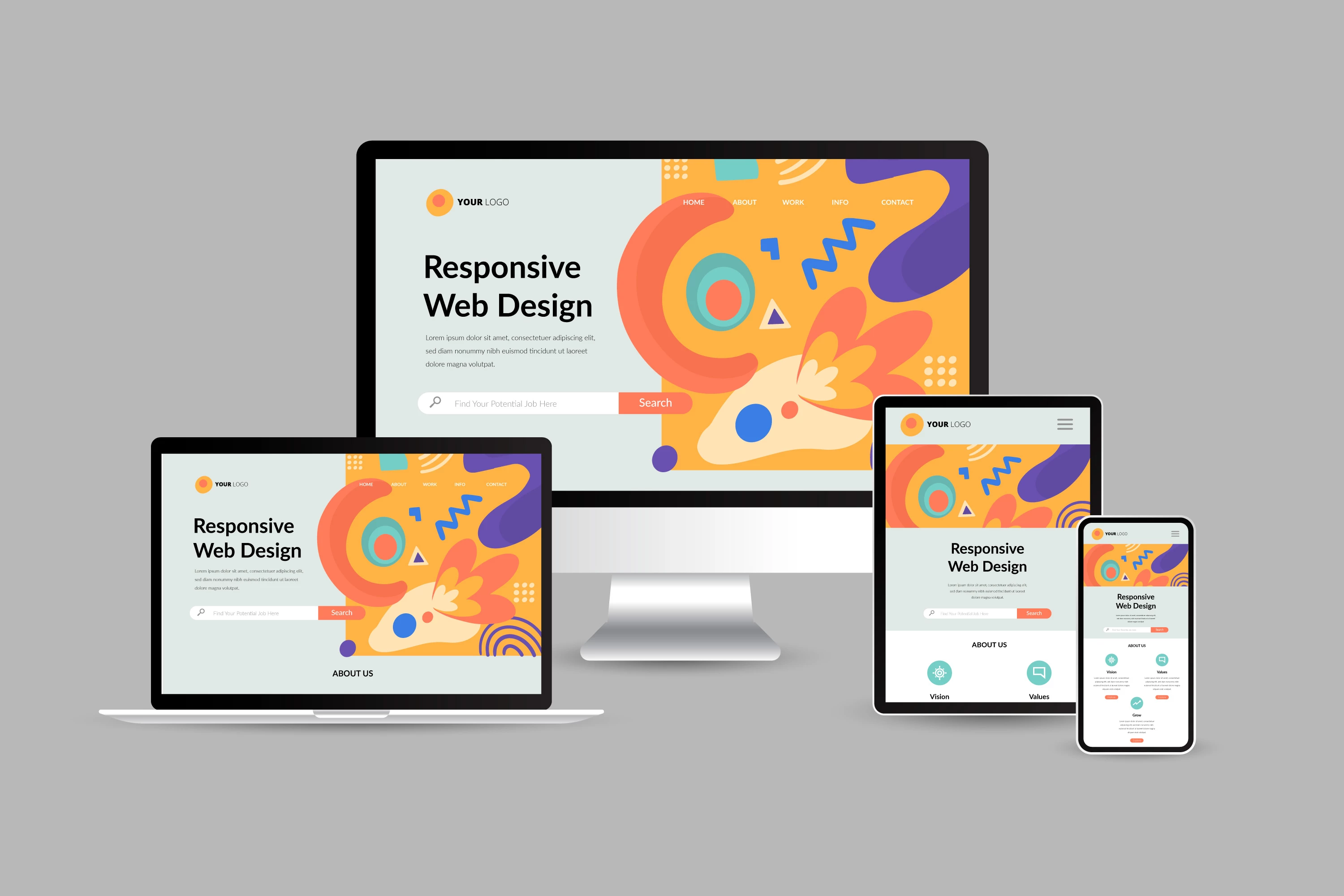Imaginative Website Design Solutions for Modern and Engaging Internet Sites
In the realm of web design, the pursuit of modern and engaging solutions has come to be significantly important for companies aiming to catch customer interest. By incorporating bold shade systems, interactive elements, and responsive formats, developers can produce experiences that not only reverberate with customers however likewise enhance brand identity.
Welcoming Vibrant Shade Plans
In website design, the calculated use of bold shade plans can substantially boost customer interaction and brand name identification. By utilizing lively tones, designers can produce visually striking sites that catch focus and promote a memorable experience. An appropriate shade scheme not just shows a business's worths however also stimulates particular feelings that can influence individual behavior.
Vibrant colors can be used to direct customers' interest to crucial elements such as contact us to activity, enhancing conversion prices. For instance, utilizing contrasting colors for buttons and web links can make these elements attract attention, triggering customers to interact quicker. A cohesive color plan throughout the website reinforces brand acknowledgment, creating a sense of knowledge and trust among visitors.
Nevertheless, it is critical to balance bold shades with adequate white room to stay clear of overwhelming users. Efficient use typography additionally enhances vibrant shades, ensuring readability while maintaining visual charm. Eventually, accepting vibrant color design in website design not just boosts visual top quality yet additionally plays an integral role in achieving tactical company objectives, making it a vital consideration for contemporary web development.

Utilizing Interactive Elements
Interactive components are vital in modern-day website design, as they considerably improve user interaction and create a much more dynamic surfing experience. By integrating attributes such as animations, float impacts, and clickable components, sites can urge users to check out content a lot more thoroughly and return for future sees.

Micro-interactions, such as subtle computer animations when a switch is clicked or a type is submitted, can also enhance the customer experience by offering instant feedback. These tiny information can make the web site feel even more receptive and alive, fostering a feeling of connection between customers and the site.
Moreover, gamification elements, such as incentives for completing certain actions, can inspire customers to engage with the web content much more deeply. By attentively incorporating these interactive elements, internet designers can develop a memorable and appealing on the internet experience that reverberates with users and motivates them to great site return.
Implementing Responsive Layout
Implementing responsive layout is important in today's multi-device landscape, making certain that sites give an optimal viewing experience throughout numerous screen sizes. As individuals significantly access the internet with mobile phones, tablet computers, and desktops, a one-size-fits-all technique is no more viable. Responsive style permits for seamless navigation and interaction, adapting design and web content to fit click here for more info the device being utilized.
Secret principles of responsive design include liquid grids, adaptable photos, and media questions. Media inquiries assist in the application of different styles based on the tool's features, such as size, height, or resolution, allowing designers to customize the individual experience successfully.
Furthermore, responsive layout boosts search engine optimization performance, as search engines prefer mobile-friendly websites. By executing responsive design, businesses not only enhance user satisfaction and engagement yet likewise increase their reach in an affordable electronic landscape. As modern technology remains to develop, taking on receptive design has actually ended up being a fundamental technique for any modern-day and appealing website.
Incorporating Multimedia Content
Multimedia web content plays a crucial role in producing engaging and vibrant web experiences that catch users' focus and enhance understanding. By incorporating text, pictures, audio, and video, internet sites can provide a richer story that interest numerous learning designs and choices. This combination not just reinforces customer engagement however additionally aids in communicating intricate ideas succinctly.
Integrating top quality photos and infographics can damage up textual material, making it a lot more absorbable. Video tutorials and discussions can give in-depth insights that fixed web content might not fully interact. Audio components, such as podcasts or background music, can likewise boost the ambience of a website, producing a much more immersive experience.
In addition, the strategic use of multimedia can improve SEO performance, as online search engine favor diverse web content kinds, raising presence. It is vital to guarantee that multimedia components do not prevent web page tons times, as this can lead to individual irritation. By stabilizing multimedia combination with performance considerations, web developers can develop aesthetically attractive and functional websites that resonate with customers, cultivating a much deeper connection and encouraging return visits.
Focusing On Customer Experience

To attain an ideal customer experience, developers must concentrate on a number of vital concepts. Receptive design is important; web sites must adjust flawlessly to numerous tools and display dimensions. This accessibility ensures that users can engage with material no matter their picked platform. Second of all, clearness in format and hierarchy site web is essential. Clear phone calls to action, legible typography, and arranged web content overview individuals, minimizing cognitive tons.
Additionally, including customer comments into the layout procedure is indispensable. Routine testing with actual individuals helps recognize discomfort points and locations for enhancement, permitting repetitive improvements. Ultimately, focusing on UX not only elevates customer contentment however also drives involvement and conversion rates, making it a critical component of contemporary website design strategies. By positioning users at the facility of design initiatives, websites can develop lasting, positive impressions that motivate return gos to.
Verdict
Finally, modern-day website design remedies that emphasize strong color design, interactive elements, responsive style, and multimedia web content considerably improve customer involvement and contentment. Prioritizing individual experience through clear formats and continuous responses further contributes to enhanced conversion prices. By taking on these strategies, sites can successfully astound site visitors and reinforce brand identity, ultimately resulting in a much more vibrant and appealing on the internet existence. The assimilation of these layout principles is crucial for attaining modern web layout goals.